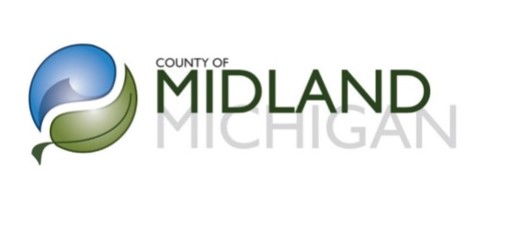Congress Authorizes Flood Risk Management Study for the Tittabawassee River Watershed, Midland Michigan
This study is authorized in the 2022 Water Resources Development Act (WRDA) which allows the U.S. Army Corps of Engineers (USACE) to initiate a flood risk management study to for the Tittabawassee River watershed in Midland County, Michigan. The project area for flood risk management and ecosystem restoration includes the Tittabawassee River, Chippewa River, Pine River, and Tobacco River.
USACE, Midland County, City of Midland, and Midland Business Alliance have executed a Feasibility Cost Sharing Agreement.
The study will investigate ways to mitigate for continual catastrophic flooding of the affected communities in the Tittabawassee River watershed including:
- Riverine flooding.
- Changes in land use and hydrology.
- Ways to include ecosystem restoration measures.
The effects of changing weather patterns leading to more frequent flooding disaster declarations.

About the Study
The City of Midland has experienced significant flooding in 1986, 1996, 2013, 2017, and 2020. The Tittabawassee River in Midland has reached a moderate flood stage of 25-feet ten times and a major flood stage of 28-feet four times since 2010. This flooding causes damage to structures and infrastructure, impacts the local, regional, and national economy, and creates social hardship for Michiganders.
In June 2013, a frontal boundary stalled over Michigan dropping 3 to 6 inches of rain—resulting in a federal flooding disaster declaration. Severe storms and flooding in 2017 caused over $100M in damage to private and public property. Record precipitation in 2020 resulted in catastrophic failure of the privately owned Edenville and Sanford Dams that caused 10,000 residents to evacuate.
According to the Federal Emergency Management Agency (FEMA), there have been four disaster declarations in the study area since 2013. Explore FEMA’s Historical Flood Risk and Costs tool to better understand historical flood impact in your county.
After the May 2020 floods, the Midland Business Alliance worked with congressional representatives to authorize the study under the WRDA 2022 legislation. In 2024, USACE received an initial $500,000 to begin the study.
Our Shared Vision
To foster a shared vision for the Tittabawassee River Flood Risk Management Study, the USACE Detroit District, Midland Business Alliance, Midland County, and the City of Midland launched the study with a planning charrette that included local, regional, state, and federal government and NGO stakeholders in Midland from Nov. 19-21, 2024. The group developed a preliminary shared vision, which will continue to evolve as more stakeholders are engaged.




“This study will positively impact Midland County residents and the mid-Michigan region by identifying possible solutions to understand and reduce flood risk and reduce the severity and frequency of flood damages to the community and its most critical assets. The study will complement ongoing efforts of local and regional partners in building resilient flood risk infrastructure for a continued inclusive thriving community.”
The study area is the Tittabawassee River watershed in Midland County, including the Chippewa River, Pine River, and Tobacco River, downstream of Sanford Lake and Dam.

Scope, Schedule, and Budget
The key components of the study scope include a riverine flooding analysis, investigating impacts to live safety and public health, and management measures to reduce damages to structures and infrastructure. Deliverables will include a full array of alternatives and comprehensive benefit considerations, NEPA compliance, and community outreach.
The study duration is expected to be three-year and $3 million federal cost. Once a schedule and budget are approved by the Assistant Secretary for the Army of Civil Works, it will be posted. The bulk of the study time and funding will be allocated to the alternative evaluation and analysis phase. This phase will include developing 2D hydraulic and hydrologic modeling, creating various economic models, preliminary engineering and design of potential alternatives, and analyzing environmental, historical, and cultural resources as well as community considerations.